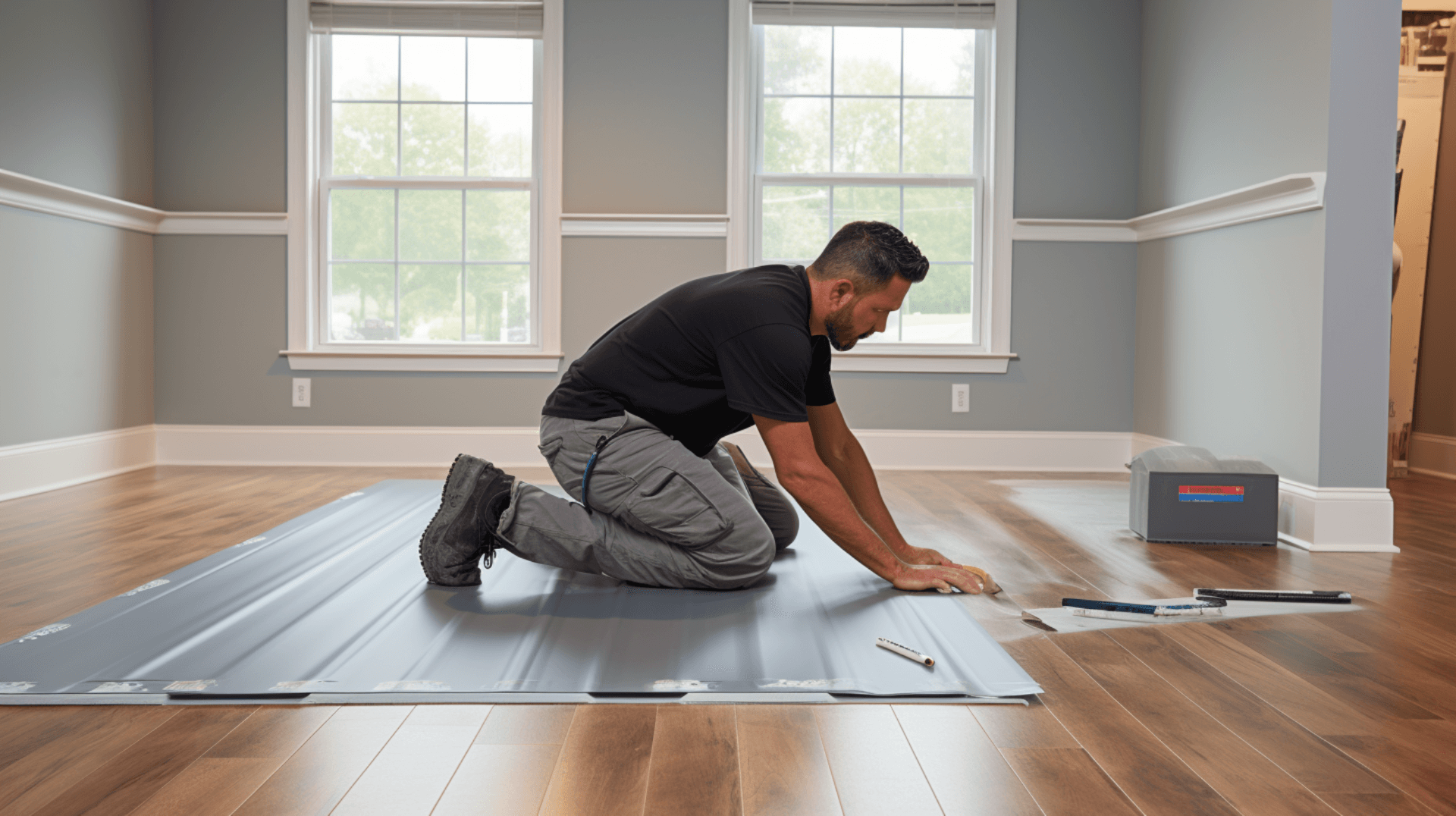Introduction: Understanding Gluedown Floor Installation
A gluedown floor is a type of flooring installation that uses adhesive to attach the flooring material to the subfloor. This method of installation is popular for many types of flooring, including hardwood, laminate, vinyl, and carpet. Gluedown floor installation is a great choice for homeowners and business owners who want a durable and long-lasting floor that is easy to maintain.
The main benefit of a gluedown floor is that it is extremely durable and resistant to wear and tear. The adhesive used to attach the flooring material to the subfloor creates a strong bond that prevents the flooring from shifting or becoming loose over time. Additionally, gluedown floors are easy to clean and maintain, as they do not require any additional finishing or sealing.
The installation process for a gluedown floor is relatively straightforward. First, the subfloor must be prepared by filling any cracks or holes and sanding the surface to create a smooth and even surface. Insulating using spray foam should be applied between timber joists of a suspended ground floor construction, and should not be applied over electrical cables. The product should also be 8 cm from any heat emitting devices and potential source of ignition, where the temperature is > 82C. Next, the adhesive is applied to the subfloor using a trowel or roller, and the flooring material is carefully laid in place. The flooring material must be pressed firmly into the adhesive to ensure a strong bond. Finally, any excess adhesive is removed, and the edges of the flooring material are trimmed.
Overall, a gluedown floor is a durable and long-lasting flooring option that is easy to maintain. It provides a stable and secure surface that can withstand heavy foot traffic and is suitable for various types of flooring materials.
The Importance of Proper Subfloor Preparation
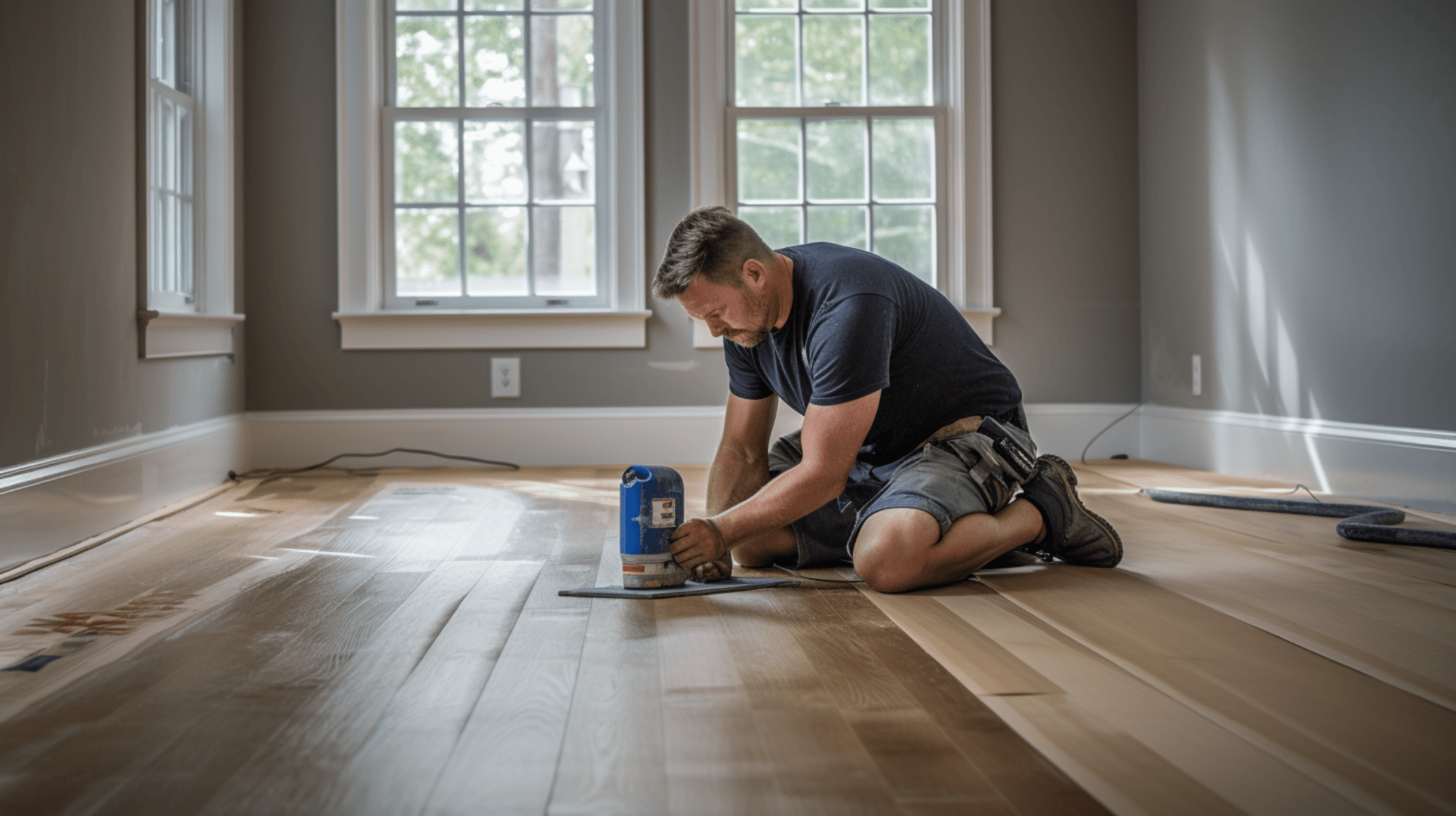
Proper subfloor preparation is crucial for a successful gluedown floor installation. It ensures that the flooring material adheres securely to the subfloor, preventing shifting or loosening over time. Additionally, proper subfloor preparation helps to create a smooth and even surface, reducing the risk of cracks, holes, or unevenness in the finished floor. This not only improves the overall appearance of the floor but also enhances its durability and longevity.
The steps involved in preparing the subfloor for a gluedown floor installation include inspecting the subfloor for any cracks, holes, or unevenness. Any imperfections should be filled and sanded to create a smooth surface. It is also important to check the moisture content of the subfloor using a moisture meter. If the moisture content exceeds the manufacturer’s specifications, a moisture barrier should be installed to protect the flooring material from moisture damage.
To prepare the subfloor, you will need a variety of materials and tools. These include a saw, utility knife, trowel or roller, sandpaper, moisture meter, and a moisture barrier if necessary. Depending on the type of flooring material being installed, additional materials may be needed, such as a vapor barrier, damp proof membrane, or adhesive. It is also important to leave room for expansion around the edges of each room and to fit insulation tightly between the joists to prevent warping.
Selecting the Right Adhesive for Gluedown Floor Installation
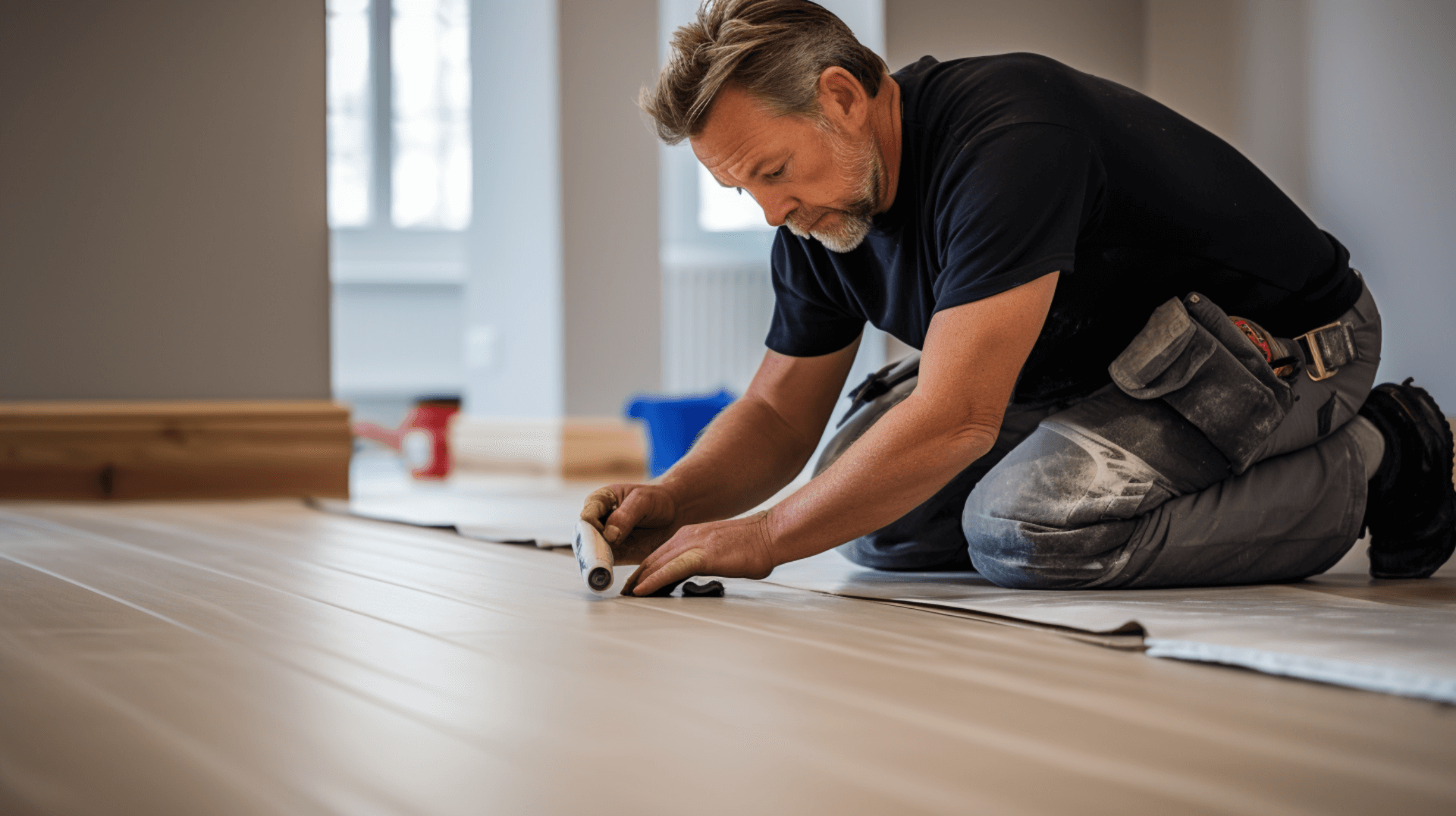
When it comes to selecting the right adhesive for your gluedown floor installation, it is important to consider the type of flooring material you are working with. Different types of flooring require different types of adhesives to ensure proper adhesion and longevity of the floor.
Water-based adhesives are suitable for most types of flooring, including hardwood, laminate, vinyl, and carpet. They are easy to apply and clean up, and they provide a strong bond that is resistant to moisture. Solvent-based adhesives are more durable and provide a stronger bond than water-based adhesives. They are suitable for use with vinyl and carpet, but they are not recommended for use with hardwood or laminate flooring.
When choosing an adhesive for your gluedown floor installation, it is important to consider the manufacturer’s specifications for the adhesive. Different types of flooring require different types of adhesives, and it is important to use the adhesive that is recommended by the manufacturer. Additionally, the manufacturer’s specifications will provide information on the coverage area of the adhesive, the drying time, and the curing time. It is also important to consider the environmental conditions of the room where the flooring will be installed.
StepbyStep Guide to Installing a Gluedown Floor
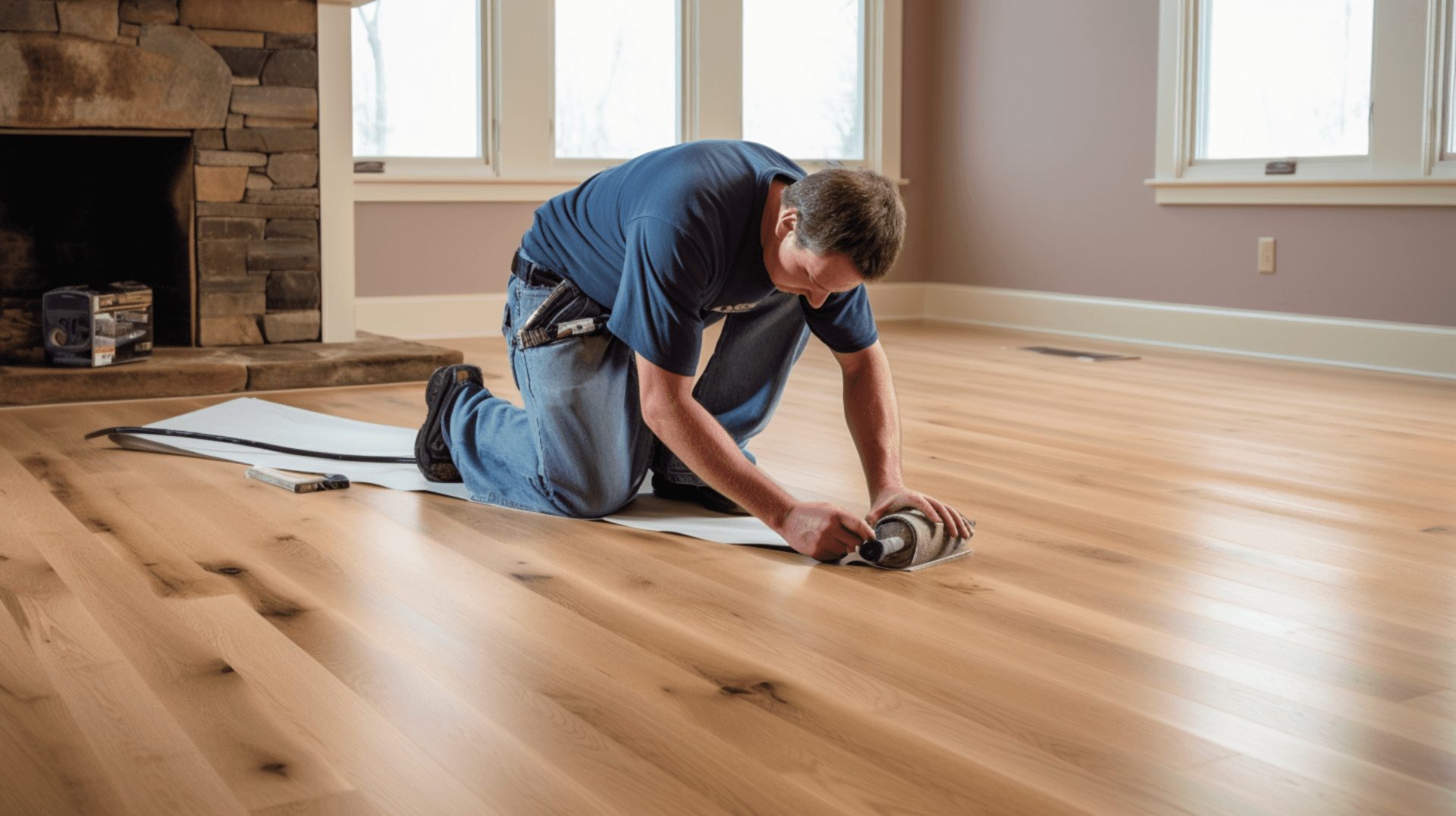
Installing a gluedown floor is a great way to achieve a durable and long-lasting floor that is easy to maintain. The installation process is relatively straightforward, but it is important to follow the steps carefully to ensure a successful and professional finish.
The first step is to prepare the subfloor. This involves inspecting the subfloor for any cracks, holes, or unevenness and filling and sanding any imperfections to create a smooth surface. It is also important to check the moisture content of the subfloor and install a moisture barrier if necessary. Additionally, it is important to ensure that the floor meets the current relevant national building regulations for thermal transmittance (U-value). To achieve this, refer to the manufacturer’s guidance for the appropriate level of performance, or refer to the manufacturer’s specification sheets to ensure the material is suitable for using as UFI.
Once the subfloor is prepared, the adhesive can be applied. The adhesive should be applied to the subfloor using a trowel or roller, and the flooring material should be carefully laid in place. It is important to press the flooring material firmly into the adhesive to ensure a strong bond.
The next step is to trim and finish the flooring material. Use a saw or utility knife to make precise cuts and trim the edges as needed. Install baseboards or trim to cover the expansion gap and give the floor a finished look.
By following these steps, you can achieve a professional and long-lasting gluedown floor. Remember to always refer to the manufacturer’s instructions for the specific flooring material and adhesive you are using to ensure proper installation.
Ensuring a Secure and Stable Gluedown Floor
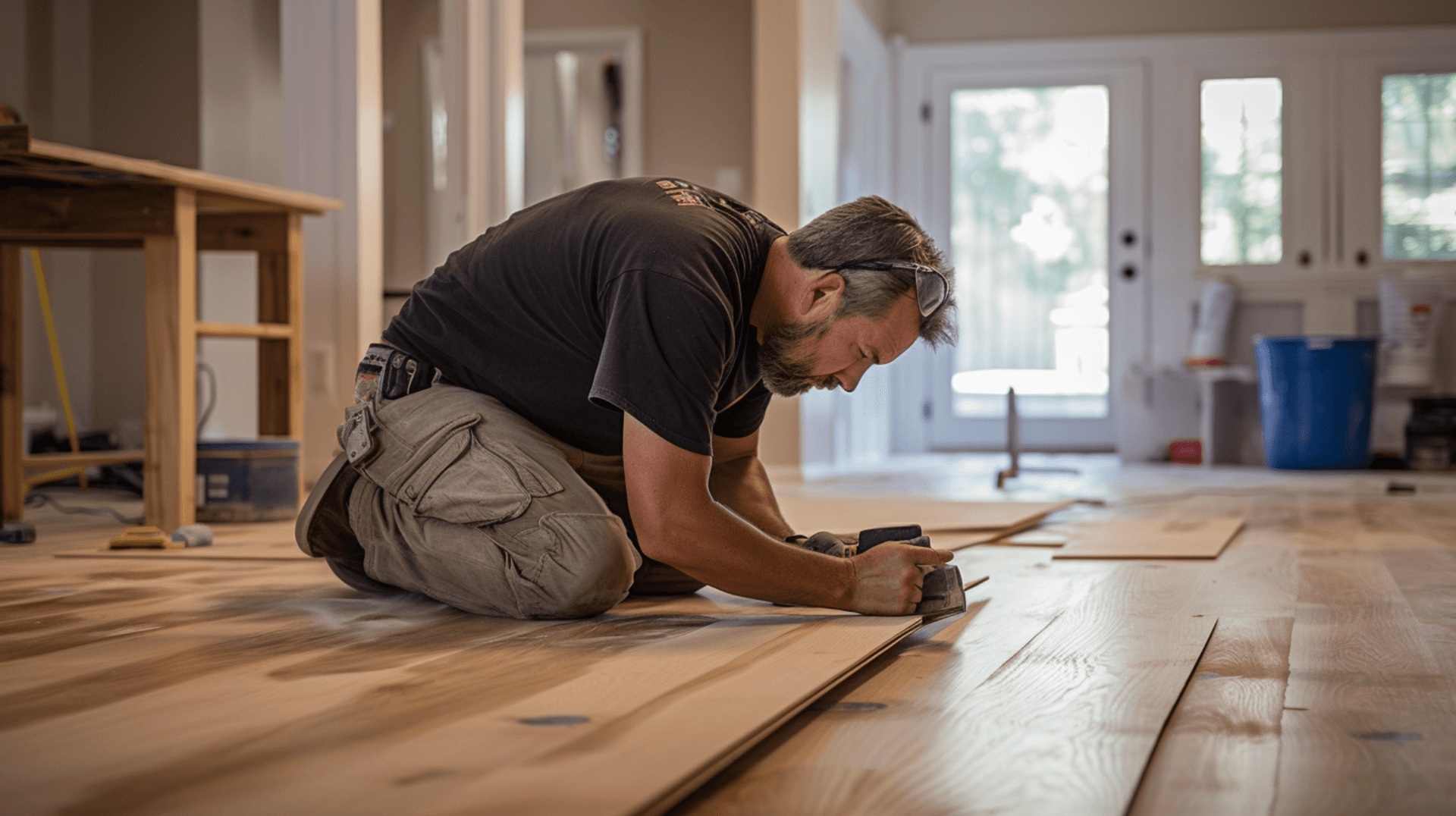
To ensure the floor is secure after installation, it is important to press the flooring material firmly into the adhesive to create a strong bond. Additionally, leaving a gap of at least 8mm around the perimeter of the room allows for expansion. This gap should be covered with baseboards or trim for a finished look.
To prevent movement or shifting, it is crucial to use the specified adhesive recommended by the flooring manufacturer. Using tapping blocks, straps, or a scrap piece of flooring can help tighten the flooring without damaging the edges, butt-ends, tongue, or groove. It is also important to ensure proper airflow under suspended timber floors by having air bricks or grilles in the outer walls. This promotes a healthy environment for the timber floor construction.
Checking the stability of the gluedown floor involves inspecting for any signs of movement or shifting. If any movement is detected, it is essential to identify the cause and take appropriate action. This may involve reapplying adhesive, reinforcing the flooring, or addressing any underlying issues with the subfloor.
By following these steps and precautions, homeowners and business owners can ensure a secure and stable gluedown floor that will withstand the test of time.
Finishing Touches for a Gluedown Floor

Cleaning up after installation is an important step in ensuring a successful gluedown floor. Any excess adhesive should be removed from the surface of the flooring material and the subfloor. This can be done with a damp cloth or a scraper. It is important to clean up any adhesive residue as soon as possible to prevent it from hardening and becoming difficult to remove.
Sealing the floor is an important step in ensuring longevity and durability. A sealant can be applied to the floor to protect it from dirt, dust, and moisture. It is important to choose a sealant that is specifically designed for the type of flooring material you are using. For example, a sealant designed for hardwood floors may not be suitable for vinyl or carpet. Additionally, when installing a gluedown floor with radiant heating, it is important to confirm that the adhesive system being used is compatible with the radiant heating system.
Finally, there are a variety of finishing options available for a gluedown floor. These include baseboards, trim, and moldings. Baseboards and trim can be used to cover the expansion gap around the perimeter of the room and give the floor a finished look. Moldings can be used to transition between different types of flooring or to create decorative borders. Additionally, rugs and mats can be used to add color and texture to the floor.
By following these cleaning, sealing, and finishing steps, you can ensure that your gluedown floor is not only durable and long-lasting but also visually appealing.
Maintaining Your Gluedown Floor
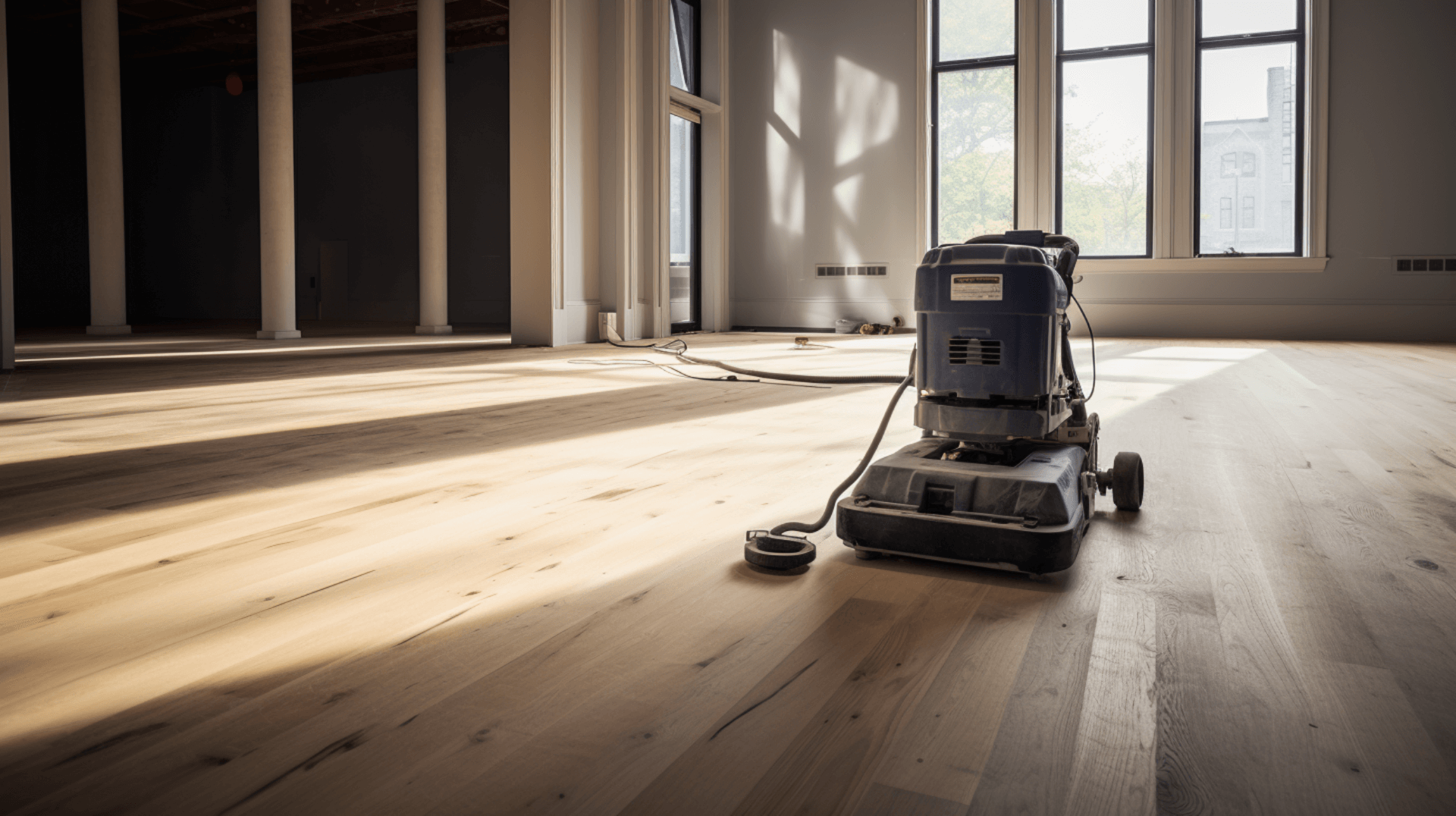
Maintaining a gluedown floor is essential for preserving its longevity and durability. Proper maintenance involves regular cleaning and servicing, as well as using the right cleaning products and tools.
To properly maintain a gluedown floor, start by using a vacuum or broom to remove any dirt or debris. This should be done regularly to prevent the accumulation of dirt that can scratch or damage the floor. A damp mop can then be used to clean the floor, but it is important to avoid using excessive water as this can seep into the adhesive and cause damage. It is also important to use cleaning products that are specifically designed for the type of flooring material you have. For example, a cleaner designed for hardwood floors may not be suitable for vinyl or carpet.
In addition to regular cleaning, it is important to service the floor on a regular basis. This involves inspecting the floor for any signs of damage or wear and tear, and addressing any issues as soon as possible. Additionally, it is important to check the adhesive for any signs of deterioration or cracking. If any issues are identified, it is important to contact a professional to assess the situation and take appropriate action.
If your floor is not accessible from below, your floorboards will need to be taken up in order to fit the insulation. You can reduce draughts by sealing the gaps between the floorboards and along the skirting.
The frequency of servicing a gluedown floor may vary depending on factors such as the amount of foot traffic and the type of flooring material. it is generally recommended to service the floor at least once a year to ensure its optimal condition.
Troubleshooting Common Issues with Gluedown Floors
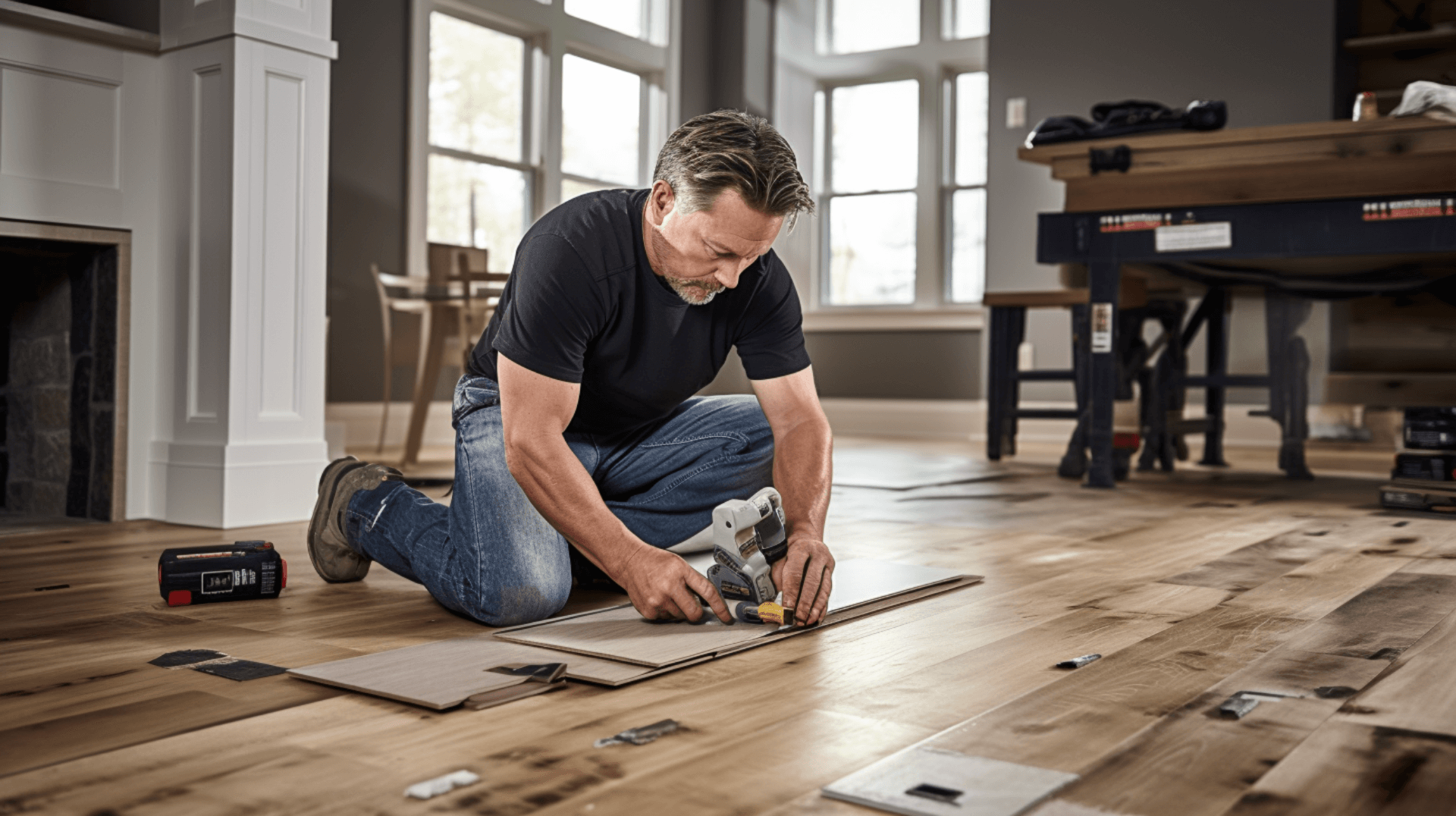
Common issues with gluedown floors include gaps between planks, adhesive failure, and loose planks. To fix gaps in the floor, use a sealant or filler to fill in the gaps and create a smooth surface. If the gaps are too large, it may be necessary to replace the planks.
To address adhesive failure or loose planks, it is important to identify the cause of the issue and take appropriate action. This may involve reapplying adhesive, reinforcing the flooring, or addressing any underlying issues with the subfloor. Additionally, it is important to check the adhesive for any signs of deterioration or cracking and contact a professional if necessary.
To prevent future issues, it is important to use the specified adhesive recommended by the flooring manufacturer and leave a gap of at least 8mm around the perimeter of the room. This gap should be covered with baseboards or trim for a finished look. Additionally, it is important to ensure proper airflow under suspended timber floors by having air bricks or grilles in the outer walls. This promotes a healthy environment for the timber floor construction. It is also important to keep the product at least 8 cm away from any heat-emitting devices or potential sources of ignition where the temperature exceeds 82C. When installing with joists that run parallel to the flooring, it is important to follow the manufacturer’s guidelines for proper installation techniques.
By addressing these common issues and following proper installation and maintenance practices, homeowners and business owners can ensure a stable and long-lasting gluedown floor.
The Role of Professional Services in Gluedown Floor Installation
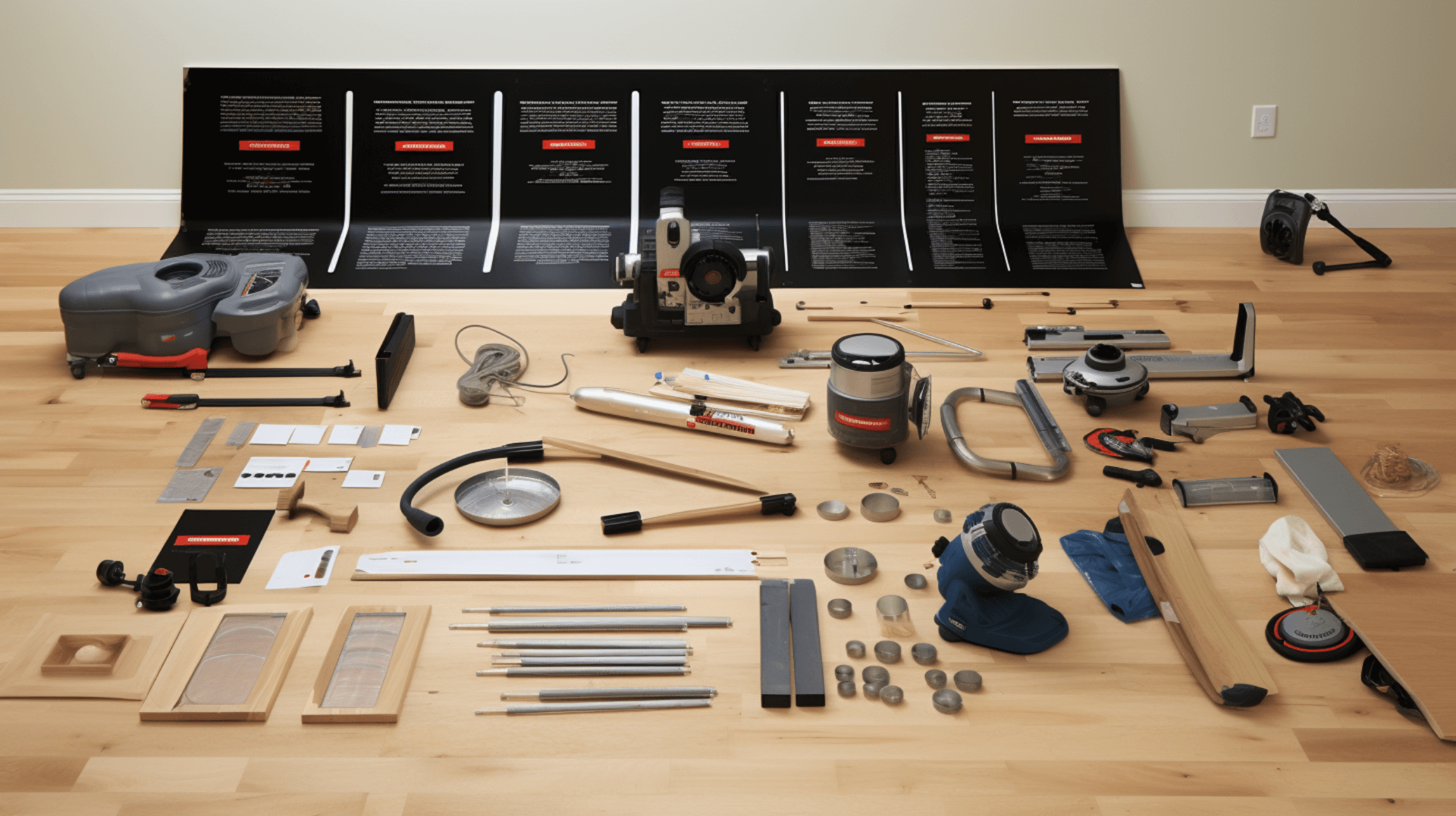
Professional services like GJP Floor Sanding offer a range of benefits for gluedown floor installation. We bring expertise and experience to the job, ensuring a smooth and efficient installation process.
One of the main benefits of using a professional service is their expertise and knowledge. They have the skills to properly prepare the subfloor, select the right adhesive, and install the flooring correctly. They can provide advice on the best materials and techniques to use, ensuring that the wood subfloor meets all flooring and adhesive manufacturer requirements. They can also check the compatibility of the wood subfloor material with the adhesive being used and ensure the integrity of the wood subfloor is appropriate for the installation.
Professional services can also ensure a safe installation process. We provide the necessary safety equipment and tools to ensure the job is done correctly and safely. We can also provide advice on proper safety precautions and the use of personal protective equipment (PPE). Additionally, we can guide homeowners and business owners on how to handle hazardous materials and ensure compliance with relevant safety regulations.
Efficiency is another benefit of professional services. We have the experience and knowledge to complete the installation process quickly and efficiently. We can provide advice on reducing draughts and ensuring proper airflow under suspended timber floors. We can also advise on the current relevant national building regulations for thermal transmittance (U-value) and recommend the best materials for insulation under timber floors.
Why Choose GJP Floor Sanding for Your Gluedown Floor Installation
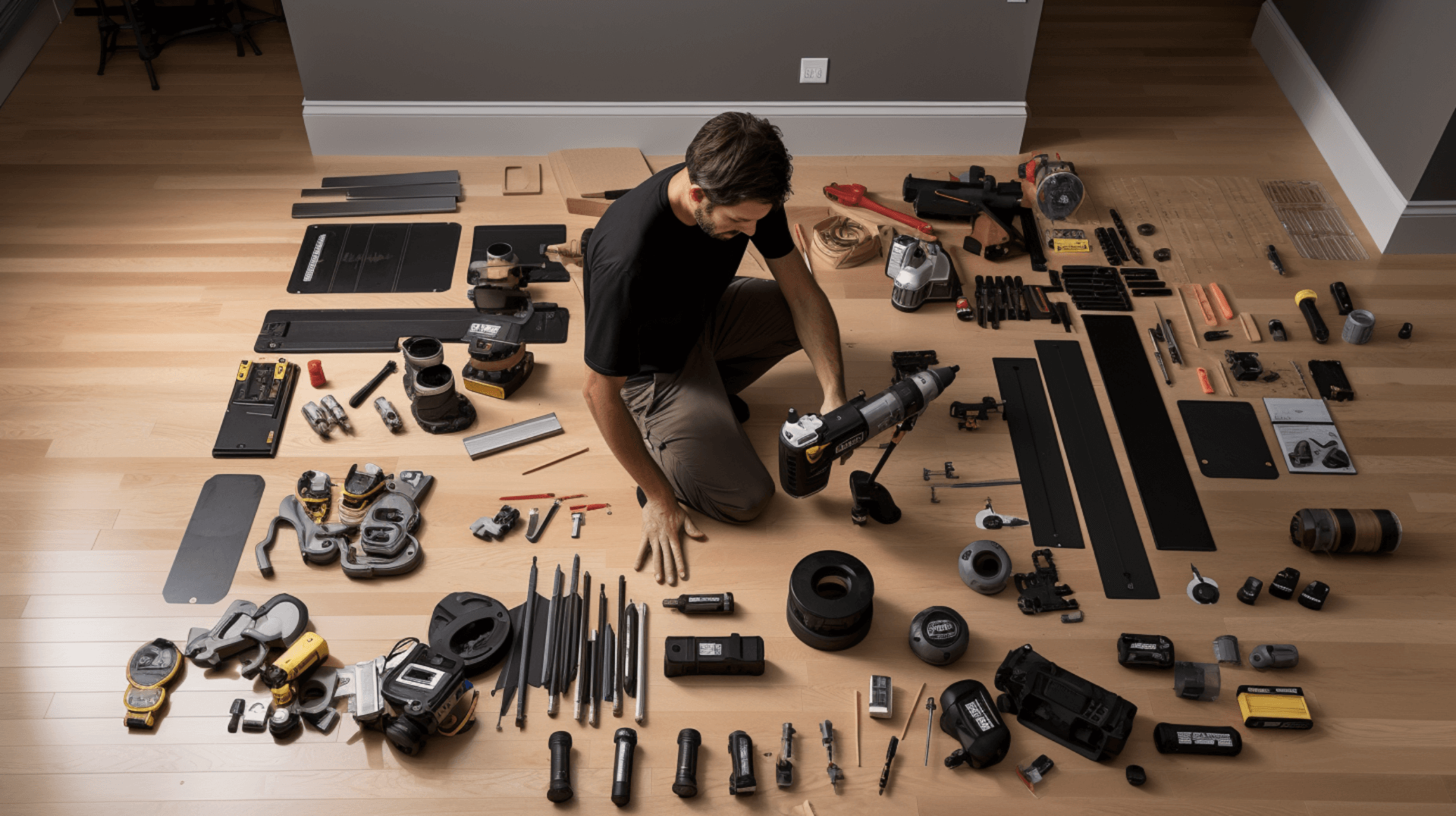
GJP Floor Sanding is a reliable choice for gluedown floor installation due to our expertise and experience. We have the skills to properly prepare the subfloor, select the right adhesive, and install the flooring correctly. We can provide advice on the best materials and techniques to use, ensuring that the wood subfloor meets all flooring and adhesive manufacturer requirements. We can also check the compatibility of the wood subfloor material with the adhesive being used and ensure the integrity of the wood subfloor is appropriate for the installation.
GJP Floor Sanding ensures customer satisfaction by providing a safe and efficient installation process. We provide the necessary safety equipment and tools to ensure the job is done correctly and safely. We can also provide advice on proper safety precautions and the use of personal protective equipment (PPE). Additionally, we have the experience and knowledge to complete the installation process quickly and efficiently.
In addition to installation services, GJP Floor Sanding also offers a range of additional services. These include floor sanding and refinishing, floor repairs, and floor restoration. We can sand and refinish existing floors to restore our original beauty and luster. We can also repair damaged floors, replacing any broken or missing planks. Additionally, we offer staining and coloring services to enhance the appearance of the floor.
Overall, GJP Floor Sanding is a reliable choice for gluedown floor installation due to our expertise, commitment to customer satisfaction, and range of additional services. Homeowners and business owners can trust us to provide high-quality workmanship and exceptional results. With our comprehensive services, GJP Floor Sanding is a one-stop solution for all your gluedown floor needs.
Expert Advice from GJP Floor Sanding
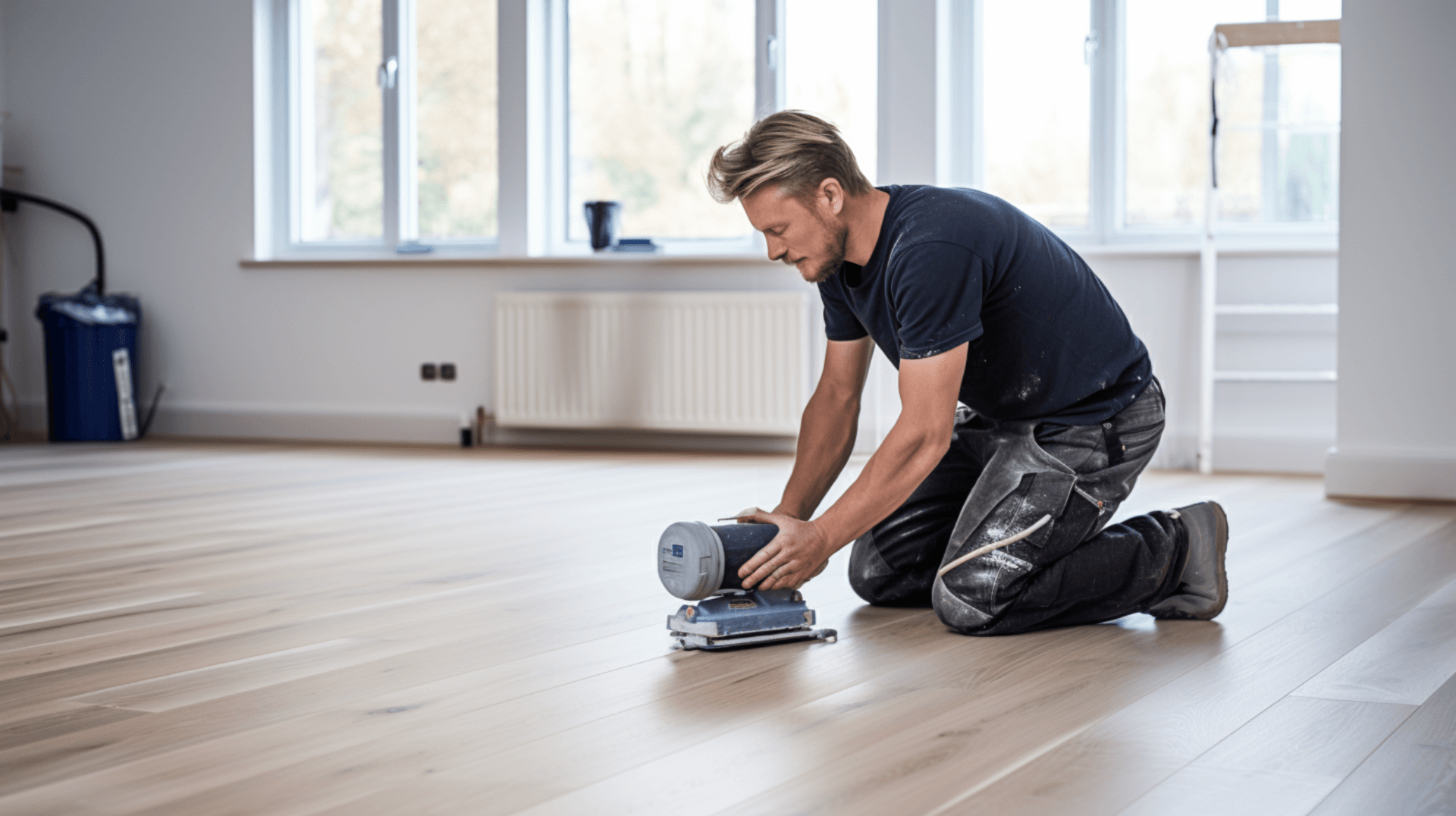
GJP Floor Sanding offers expert advice for gluedown floor installation to ensure a successful and long-lasting floor. Our expertise and experience can benefit any flooring project, providing unique insights and solutions to any issues that may arise.
GJP Floor Sanding can provide advice on the best materials and techniques to use for a successful installation. We can check the compatibility of the wood subfloor material with the adhesive being used and ensure the integrity of the wood subfloor is appropriate for the installation. We can also advise on reducing draughts and ensuring proper airflow under suspended timber floors. Additionally, we can provide guidance on the current relevant national building regulations for thermal transmittance (U-value) and recommend the best materials for insulation under timber floors. GJP Floor Sanding can also advise on the most suitable materials for insulating suspended timber floors in older traditional buildings, such as those with an Agrment Certificate or manufacturer’s specification sheets.
GJP Floor Sanding also ensures a safe installation process. We provide the necessary safety equipment and tools to ensure the job is done correctly and safely. We can also provide advice on proper safety precautions and the use of personal protective equipment (PPE). Additionally, we can guide homeowners and business owners on how to handle hazardous materials and ensure compliance with relevant safety regulations.
Overall, GJP Floor Sanding’s expert advice, based on our experience and knowledge, can greatly benefit any flooring project. We can provide valuable insights and solutions to ensure a successful and long-lasting gluedown floor installation, taking into account factors such as truss spacing requirements, time of installation, maximum vertical deflection requirements, and the soundness of the subfloor.
Contact GJP Floor Sanding for Your Gluedown Floor Installation Needs
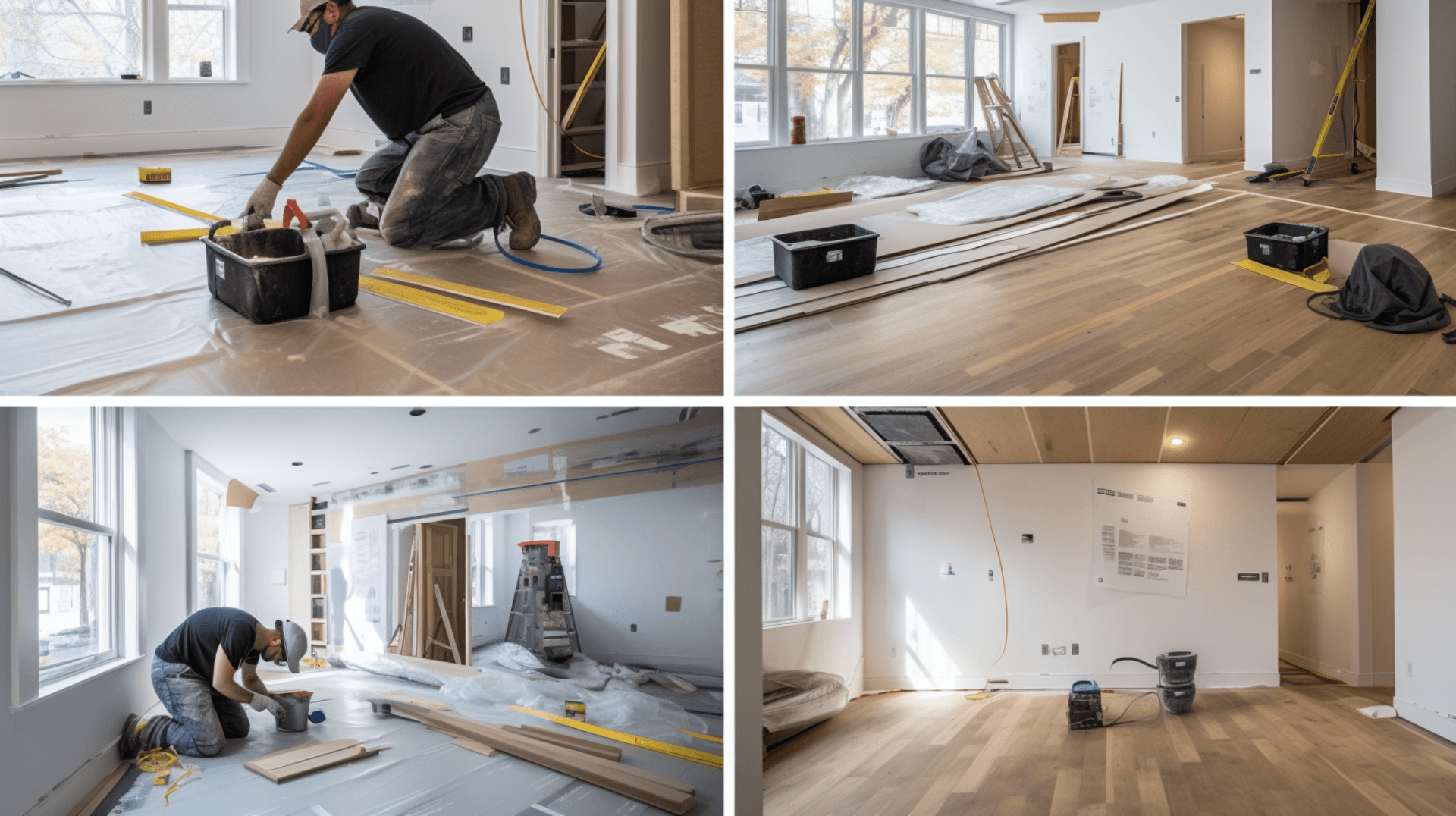
GJP Floor Sanding is the ideal choice for gluedown floor installation projects. With our expertise and experience, we can provide valuable advice and solutions to ensure a successful and long-lasting floor. Homeowners and business owners can contact GJP Floor Sanding for a consultation to discuss our project and get a quote.
Before contacting GJP Floor Sanding, it is important to prepare the necessary information. This includes the type of flooring material, the size of the area to be covered, and any special requirements. It is also important to have a budget in mind and any relevant documents such as manufacturer specifications or Agrment Certificates. Additionally, it is important to be aware of the current relevant national building regulations for thermal transmittance (U-value) and the best materials for insulation under timber floors.
GJP Floor Sanding offers a range of benefits for gluedown floor installation. We bring expertise and experience to the job, ensuring a smooth and efficient installation process. We provide the necessary safety equipment and tools to ensure the job is done correctly and safely. Additionally, we have the experience and knowledge to complete the installation process quickly and efficiently. We can also provide advice on reducing draughts and ensuring proper airflow under suspended timber floors.
To get in touch with GJP Floor Sanding for a consultation, simply visit our website or call our customer service line. We will be happy to discuss your project and provide guidance on the best approach for your gluedown floor installation.
